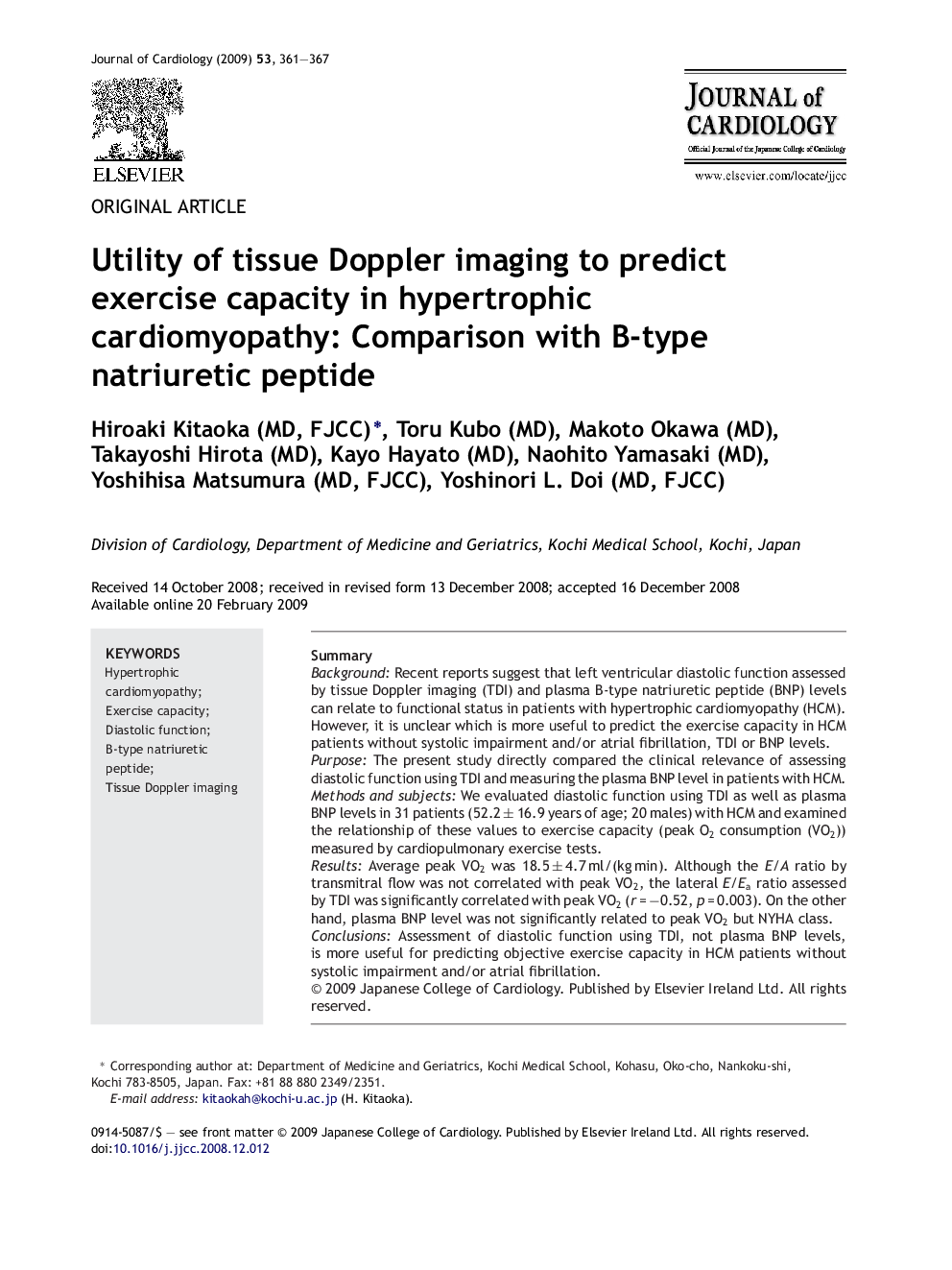| Article ID | Journal | Published Year | Pages | File Type |
|---|---|---|---|---|
| 2963634 | Journal of Cardiology | 2009 | 7 Pages |
SummaryBackgroundRecent reports suggest that left ventricular diastolic function assessed by tissue Doppler imaging (TDI) and plasma B-type natriuretic peptide (BNP) levels can relate to functional status in patients with hypertrophic cardiomyopathy (HCM). However, it is unclear which is more useful to predict the exercise capacity in HCM patients without systolic impairment and/or atrial fibrillation, TDI or BNP levels.PurposeThe present study directly compared the clinical relevance of assessing diastolic function using TDI and measuring the plasma BNP level in patients with HCM.Methods and subjectsWe evaluated diastolic function using TDI as well as plasma BNP levels in 31 patients (52.2 ± 16.9 years of age; 20 males) with HCM and examined the relationship of these values to exercise capacity (peak O2 consumption (VO2)) measured by cardiopulmonary exercise tests.ResultsAverage peak VO2 was 18.5 ± 4.7 ml/(kg min). Although the E/A ratio by transmitral flow was not correlated with peak VO2, the lateral E/Ea ratio assessed by TDI was significantly correlated with peak VO2 (r = −0.52, p = 0.003). On the other hand, plasma BNP level was not significantly related to peak VO2 but NYHA class.ConclusionsAssessment of diastolic function using TDI, not plasma BNP levels, is more useful for predicting objective exercise capacity in HCM patients without systolic impairment and/or atrial fibrillation.
